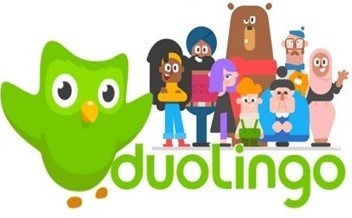Gamification in EFL classroom to support teaching and learning in 21st century
DOI:
https://doi.org/10.21070/jees.v6i1.882Keywords:
grammar, gamification, DuolingoAbstract
In the 21st century, the use of games becomes a trend within adults and youngsters and has recently obtained a massive notice of academics, educators, and practitioners. Gamification is a term used in learning with games that can be used to improve English since it reflects an innovative and captivating learning activity. Several studies on gamification show that it can make students feel more excited and motivated during their effort to elevate their English language skills. In this research, one medium of gamification called Duolingo was explored in grammar learning activities for the second-year students in the subject of “Grammar for Written Discourse”. They used Duolingo from their smartphones to support their grammar learning. This research employed an action research design in which observations, questionnaires, and documentation were used to collect the data. By the end of the result, it can be concluded that Duolingo is a medium that can be effectively used to implement gamification in language learning. It is also confirmed that students gave positive attitudes and results in the implementation of Duolingo in grammar lesson. The results of the research can be used as a reference in facilitating the students with innovative and captivating English learning.
HIGHLIGHTS:
- Duolingo provides some language skills that students can improve: grammar, writing, translating, listening, and pronunciation.
- However, all respondents assumed that the application was more suitable for grammar since Duolingo gives the right answers and repetitions for the wrong answers.
- Duolingo understands Indonesian words and automatically correct the wrong words.
Downloads
References
Bicen, H., & Kocakoyun, S. (2018). Perceptions of students for gamification approach: Kahoot as a case study. International Journal of Emerging Technologies in Learning. https://doi.org/10.3991/ijet.v13i02.7467
Bikowski, D. (2018). Technology for Teaching Grammar. The TESOL Encyclopedia of English Language Teaching, July, 1–7. https://doi.org/10.1002/9781118784235.eelt0441
Duolingo. (n.d.). Guide for leaders in education.
Hashim, H., Rafiqah M. Rafiq, K., & Md. Yunus, M. (2019). Improving ESL Learners’ Grammar with Gamified-Learning. Arab World English Journal. https://doi.org/10.24093/awej/call5.4
Hossain, M. A. (2018). Difficulties of Learning English Language at the Secondary Level: A Case Study of Thakurgaon District. Journal of Education and Training. https://doi.org/10.5296/jet.v5i2.13500
Jašková, V. (2014). Duolingo as a New Language-Learning Website and Its Contribution to e-Learning Education.
Duolingo as a New Language-Learning Website and Its Contribution to e-Learning Education., 3(November 20), 59–70. https://is.muni.cz/th/342420/pedf_m/Duolingo.docx
Kiryakova, G., Angelova, N., & Yordanova, L. (2014). Gamifcation in Education. Proceedings of 9th International Balkan Education and Science Conference. https://doi.org/10.4018/978-1-5225-5198-0
Martí-Parreño, J., Seguí-Mas, D., & Seguí-Mas, E. (2016). Teachers’ Attitude towards and Actual Use of Gamification. Procedia - Social and Behavioral Sciences, 228(June), 682–688. https://doi.org/10.1016/j.sbspro.2016.07.104
Munday, P. (2015). the Case for Using Duolingo As Part of the Language Classroom Experience. RIED. Revista Iberoamericana de Educación a Distancia, 19(1). https://doi.org/10.5944/ried.19.1.14581
Parvin, R. H., & Salam, S. F. (2018). The Effectiveness of Using Technology in English Language Classrooms in Government Primary Schools in Bangladesh. FIRE: Forum for International Research in Education, 2(1). https://doi.org/10.18275/fire201502011049
Shyamlee, S., & Phil, M. (2012). Use of technology in English language teaching and learning: An analysis. A Paper Presented at the 2012 International Conference on Language, Medias and Culture IPEDR Vol.33 (2012) ©(2012) IACSIT Press, Singapore.
Stringer, E. (2010). Action research in education. In International Encyclopedia of Education. https://doi.org/10.1016/B978-0-08-044894-7.01531-1
Su, C. H., & Cheng, C. H. (2015). A mobile gamification learning system for improving the learning motivation and achievements. Journal of Computer Assisted Learning. https://doi.org/10.1111/jcal.12088
Tan, L. (2018). Meaningful gamification and students’ motivation: A strategy for scaffolding reading material. Online Learning, 22(2). https://doi.org/10.24059/olj.v22i2.1167
Vesselinov, R., & Grego, J. (2012). Duolingo Effectiveness Study. City University of New York, USA, December 2012, 1–25. http://static.duolingo.com/s3/DuolingoReport_Final.pdf%5Cnpapers3://publication/uuid/66F5DF12-D322-4400-8488-A09AE8EF47F1
Zarzycka-Piskorz, E. (2016). Kahoot it or not?: Can games be motivating in learning 'grammar? Teaching English with Technology.

Published
How to Cite
Issue
Section
License
Copyright (c) 2021 Indah Sri Redjeki, R. Muhajir

This work is licensed under a Creative Commons Attribution 4.0 International License.







